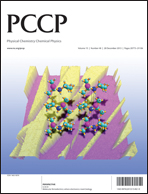Improved uniformity in high-performance organic photovoltaics enabled by (3-aminopropyl)triethoxysilane cathode functionalization
Abstract
Organic photovoltaics have the potential to serve as lightweight, low-cost, mechanically flexible solar cells. However, losses in efficiency as laboratory cells are scaled up to the module level have to date impeded large scale deployment. Here, we report that a 3-aminopropyltriethoxysilane (APTES) cathode interfacial treatment significantly enhances performance reproducibility in inverted high-efficiency PTB7:PC71BM organic photovoltaic cells, as demonstrated by the fabrication of 100 APTES-treated devices versus 100 untreated controls. The APTES-treated devices achieve a power conversion efficiency of 8.08 ± 0.12% with histogram skewness of −0.291, whereas the untreated controls achieve 7.80 ± 0.26% with histogram skewness of −1.86. By substantially suppressing the interfacial origins of underperforming cells, the APTES treatment offers a pathway for fabricating large-area modules with high spatial performance uniformity.


 Please wait while we load your content...
Please wait while we load your content...